How Supermarkets Get Us To Buy What We Don’t Really Need
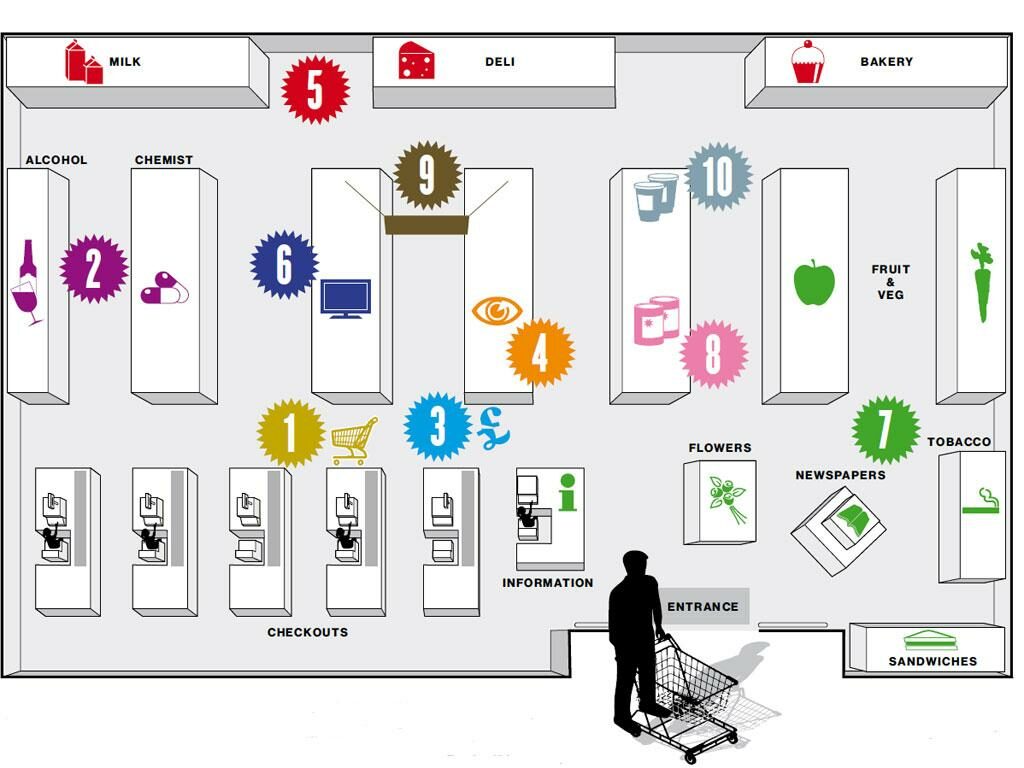
First published in 2017, still as relevant today. I find grocery shopping online is a good way to keep to a budget. I can happily fill my basket and if the total is what I deem to be too much, I can go back and take things out again that may be a bit of an indulgence, or wait until next time. I wouldn’t do that in an actual shop.
Researching this blog post has been absolutely fascinating. I was aware beforehand that we are constantly being influenced, without being aware of it. And I knew a couple of the ways it was done. I have discovered SO many more!
Some of the many ways we can be influenced
All our senses can be manipulated to change our perception and actions. We all like to think we are in complete control of decisions when we shop, but not necessarily so! There have been many studies for instance that show that given the same food or drink items that are coloured differently, variably, consumed with differing sounds or under different coloured lighting, we will experience the taste differently.
High frequency sounds for instance will make the same things seem sweeter, low frequencies, more bitter. Understand that loud background noise suppresses saltiness, sweetness and overall enjoyment of food, plus the high altitude blocking the nose from processing aroma, and you can begin to see why airplane food is so often unsatisfactory. I can’t find the article when an experiment was done where subjects consumed several identical items of food and drink under different coloured lights. They reported all kinds of different tastes and flavours for each (identical) item!
One of the articles above even features a manufacturer saying that crisp flavours are determined not by the content but by the colour of the packet!
The Warm Up
Go inside a supermarket and you are exposed to an enormous amount of marketing expertise from the moment you step over the threshold. And I’m not just referring to bogofs and special offers.
Psychologists refer to the first part of the store as the decompression zone when you take stock of what you’re intending to buy and prepare to enter the fray. Some stores have their coffee shop here and it is well known by sales people that getting a prospective customer to hold a hot drink will make them look at you, the sales person, in a favourable light, and make you, the customer, much more likely to buy. So strategy number one would be, if you’re going to have one, have your cup of coffee after you’ve completed your purchases, not before.
Bright Lights
The next part of the supermarket is typically the fresh fruit and vegetables. Normal strip lighting makes the colours in fruit and veg look a bit flat, so special lighting is used here. The width of the aisles are designed to feel spacious, but to have everything within reach, so you’ll feel that you are ‘gathering’ and the ultimate cost of buying the ‘gathered’ items goes to the back of your mind. Once in ‘gathering’ mode, it’s likely that feeling of relaxed choosing will continue, meaning that yes, you will tend to buy more
Sales messages on the shelves tempt you to buy. The banners that hang overhead have one of the biggest influences on us and is why many supermarkets have lots of them. We don’t even have to necessarily look at them. One supermarket experimented by removing all words from the aisle banners. Sales remained the same.
Eye level is buy level
Anything displayed at eye level is likely to be made up of items the supermarket particularly want to sell. They want to shift excess stock, it’s a promotion, or it’s the end of, say, the Easter season. They are the more expensive items and the items that are most profitable for the supermarket. Anything displayed in the cabinets on the end of an aisle use this ploy on an even more intensive level. We are so programmed for this, that even when supermarkets place full priced items on an aisle end, sales still go up
The items on the bottom shelf are usually the best value for the shopper. Our eyes don’t tend to look there, so there is less sold from those shelves. One of the reasons that the basics products tend to be stocked on those shelves.
Mood Music
What do you think about the music in supermarkets? Is it there maybe to amuse you while you shop, or provide a more pleasant background noise? Afraid not, it’s commerce at its most pure and simple. Like most other things in supermarkets, it’s there to extract maximum cash from you, in the minimum amount of time.
Music is employed in the background of production facilities, offices and retail stores to produce certain desired attitudes and behaviours among employees and/or customers
There is sufficient evidence to conclude that the tempo of in-store background music can significantly affect the pace of the in-store traffic flow of supermarket customers. Freakonomics
Research has shown that music needs to be matched with the environment. Slow music will tend to keep shoppers in the store longer, perhaps desirable in, say, an electronics shop. Whereas in a grocery shop, faster tempo music will tend to result in shoppers moving quicker, and spending more
Tempting Aromas
How many times have you gone into a supermarket, smelled lovely fresh bread and bought a bakery item that you weren’t planning to purchase? Pumping out the smell of coffee at a petrol station increased sales by 300%. The mere smell of it making three times as many people want some, and to buy some, as did before. I went into a chocolate shop in Bruges and remarked to my friends that you could smell the quality of the chocolate in there. For all I knew, it was artificial!
“It goes directly to the limbic system, which is the emotional control centre of your brain, so you smell something and – bang – it triggers an emotion,” says Semoff. “Whereas all the other senses have to be processed first.” The Independent
The Power Aisle
This refers to a very noticeable area, quite possibly a central aisle (Lidl anyone?) where one-off items can be had. Called the Power Aisle because of the incredible power it has to shift stock. Whether or not these are actually bargains, a mind-set has been made where the expectation is that anything else in the shop will also be a great bargain, making us much more likely to spend more in the rest of our shop.
What am I saying?
I really don’t mean this post to be a complete rubbishing of supermarkets. What I was thinking of when I started it was the many ways we are inveigled to spend more than we planned, intended or indeed, can afford. All the usual mundane advice is relevant here. Shop your freezer, fridge and cupboards first. Do a meal plan and make a shopping list. It’s fine to go off piste if you spot a bargain, change and adapt your meal plan to fit.
It is the job of supermarkets to get you to buy as much in their shop, rather then their competitors, as they can manage. It is our job, as customers, to be very clear about what we want, how much we can and can’t afford. And perhaps, most importantly, to spend mindfully. It’s absolutely fine to fritter and spend your way around town if you’ve decided that’s what you are going to do today. Not so much if you can’t afford to and it ‘just happens’.
Have you noticed any ways you are influenced?
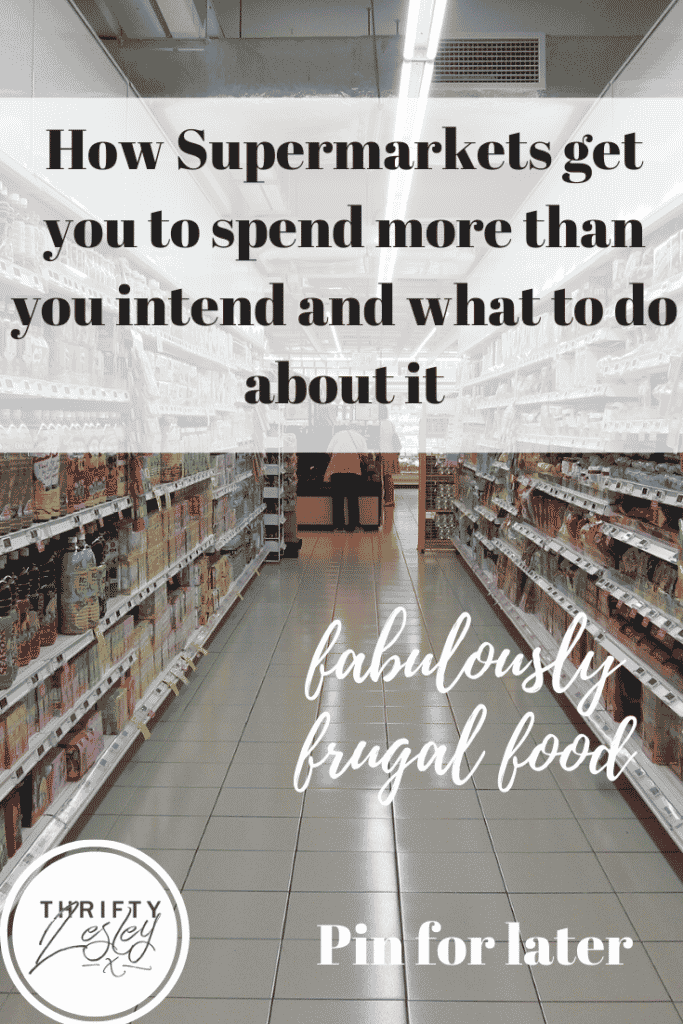
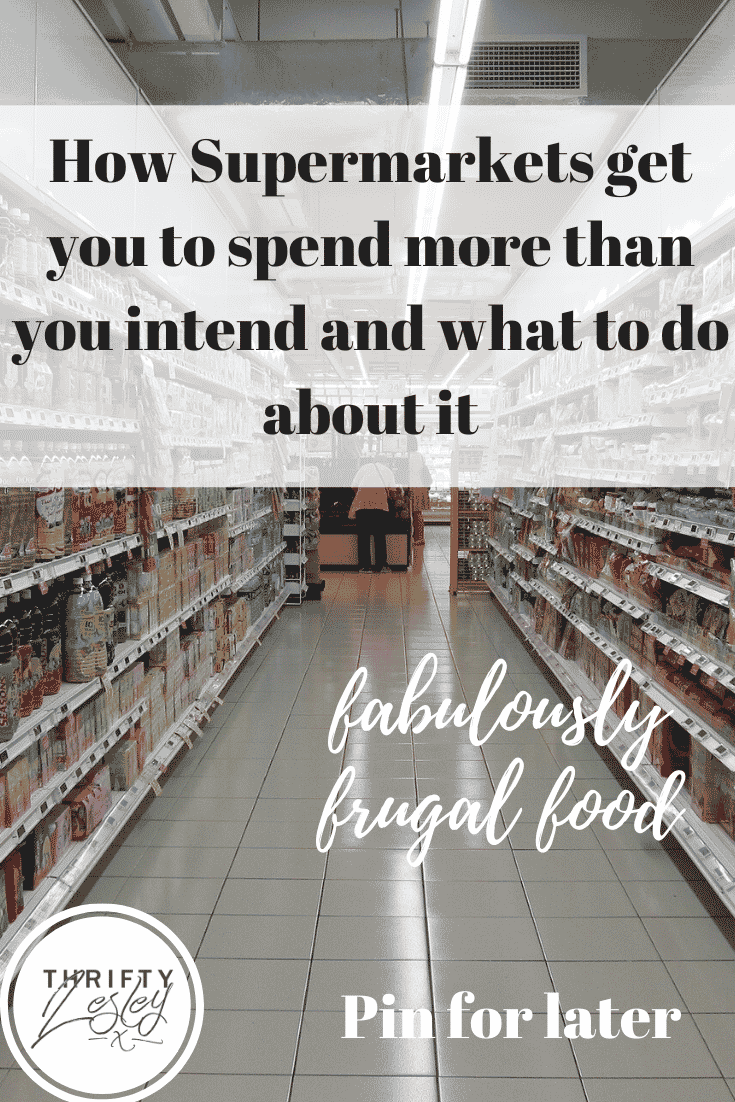
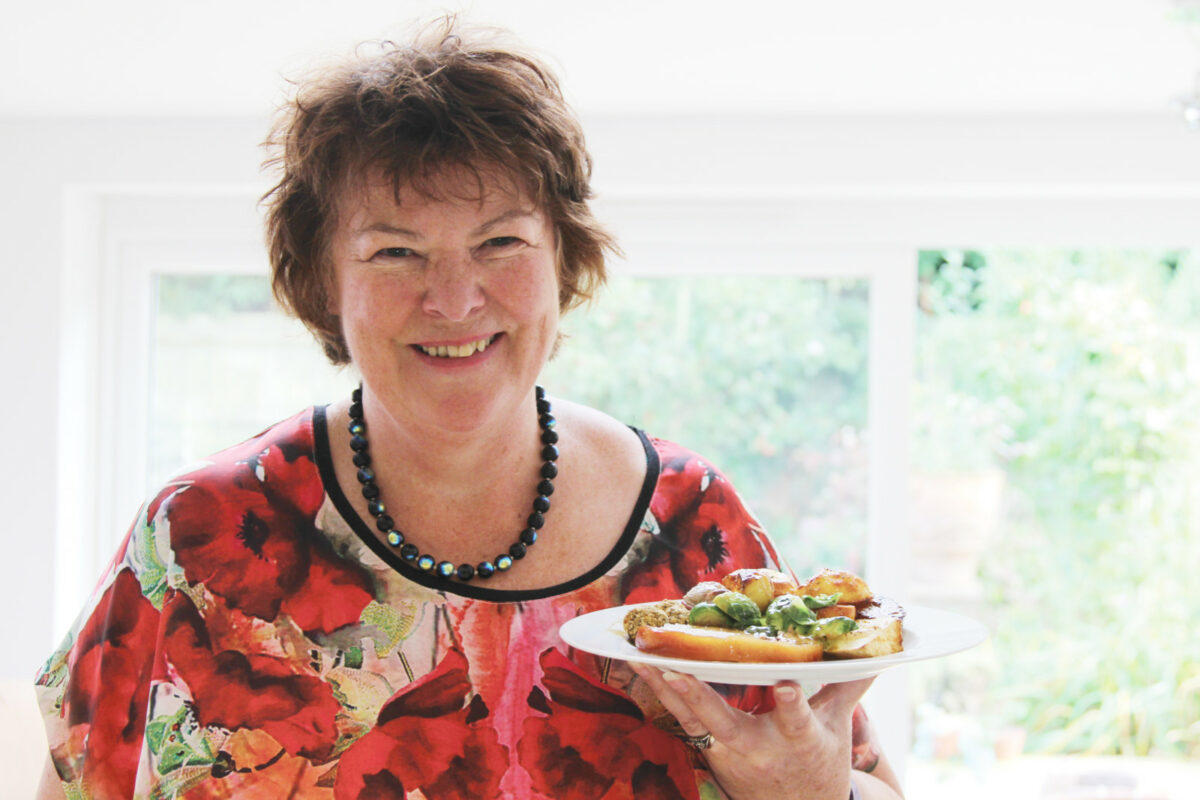

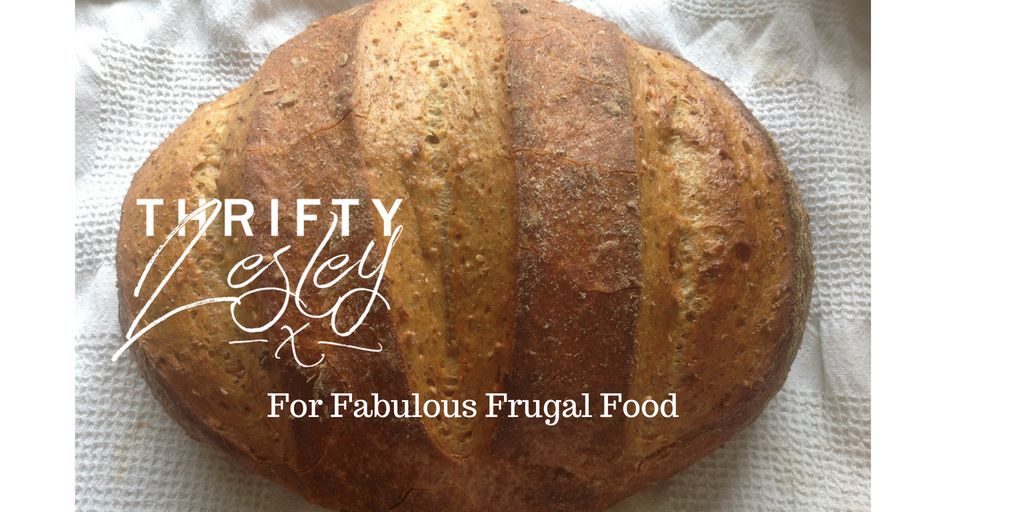
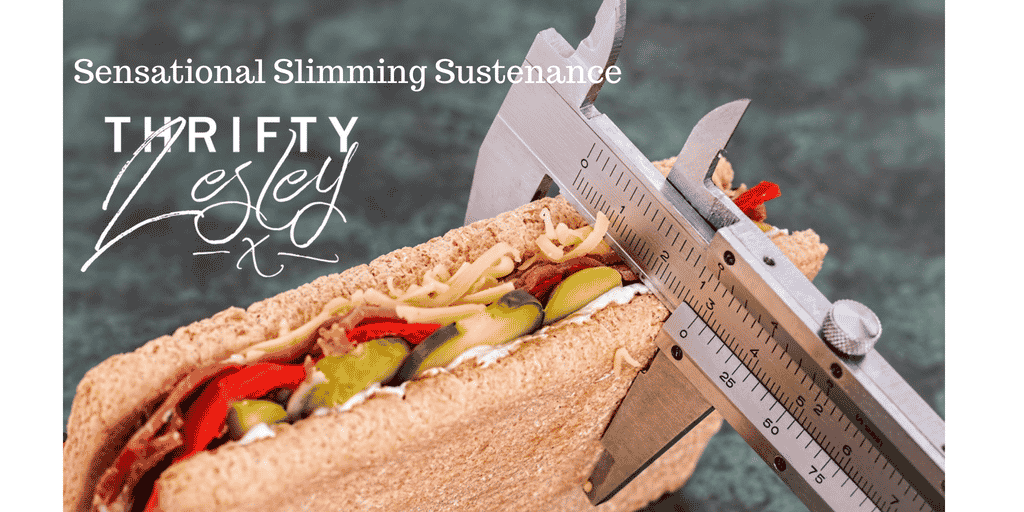
Yeap, it’s all about psychology combined with marketing.
It’s better to make a list of what to buy before entering a supermarket.
Great post, thank you Lesley! The aroma thing happened to me once, with strawberries and I said never again – however, I couldn’t believe such a trick was being pulled…
Anyway, much gratitude for this 🙂
I do big shops online as it seems to be the easiest way to find the best value. But to be honest, I don’t tend to do many big shops now, we just buy whatever we need every few days, not the cheapest way to do it!
I find store layouts frustrating I buy dry goods then fresh meat then I have to battle the wrong way back to fruit and veg. If there is a special on the shelf end I think oh that is interesting then check the isle for the best buy. Some isles I have never visited.
I have practally stopped shopping at Tesco since they cut their value range now I do a sprint by the yellow stickers to the item I want and I am out in under ten minutes.
In other words we are entering a battleground us versus the marketing people, do they heck want to save us more or give us better value as long as the profits are up and in how many other parts of life are these techniques used that we are not aware of. Very interesting lesley thankyou.